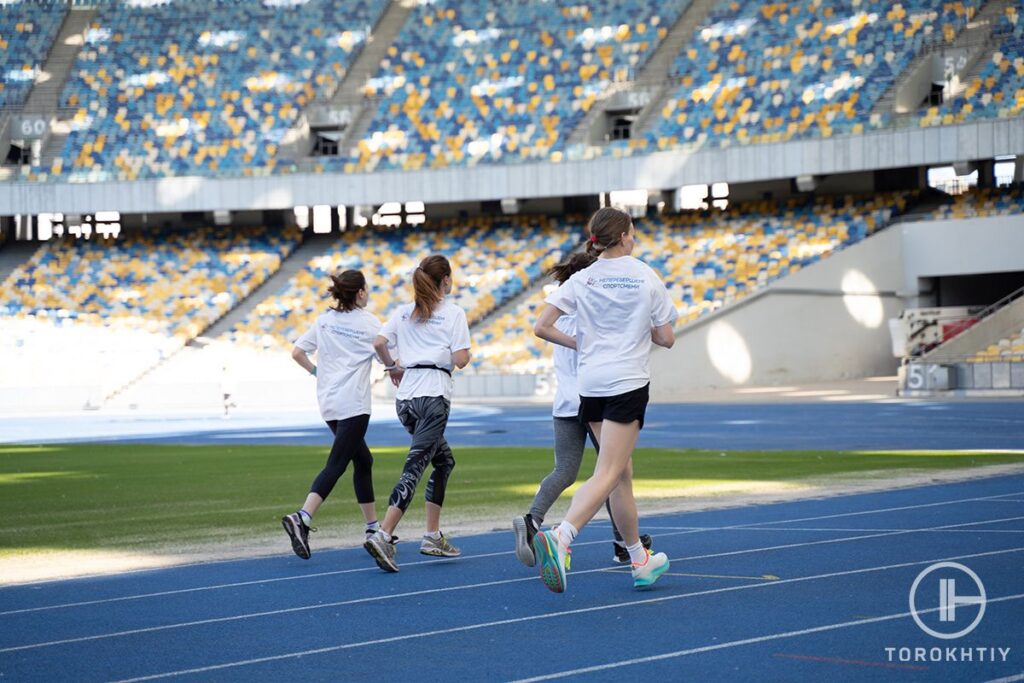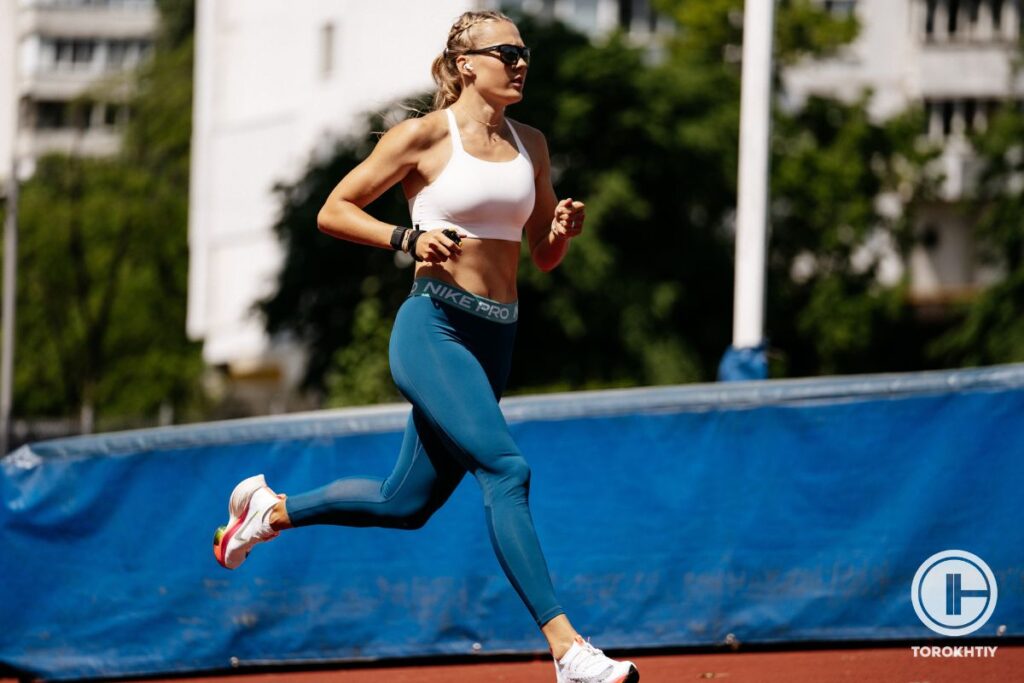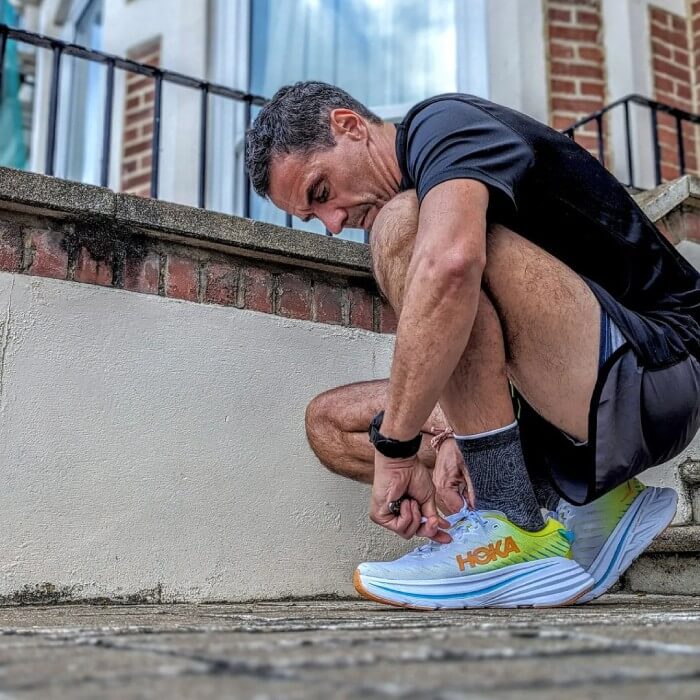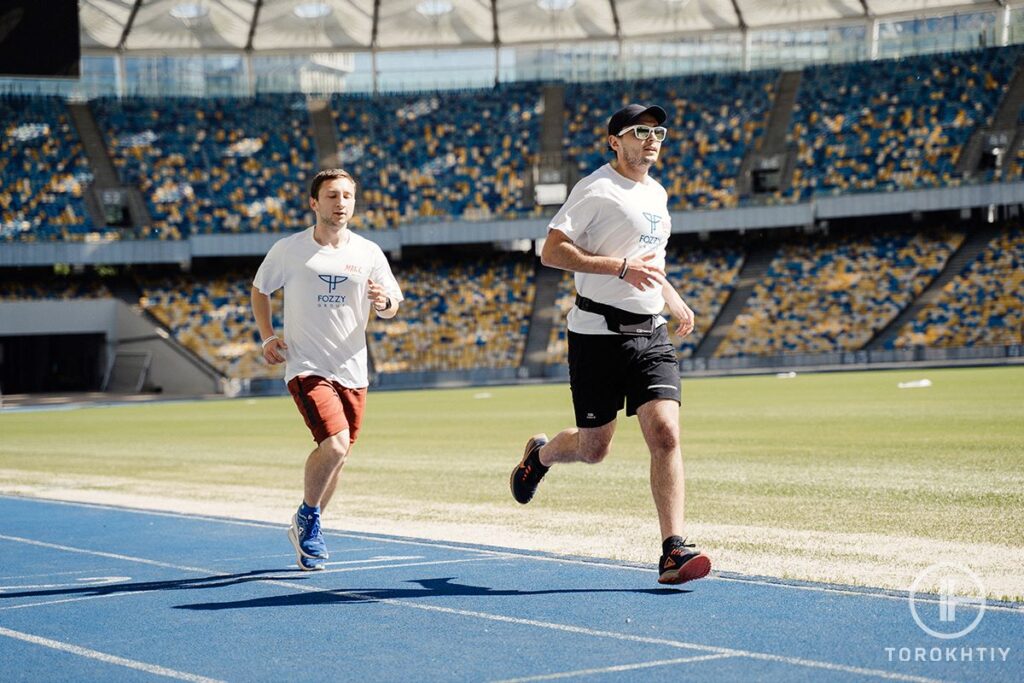How to Go from 5k to 10k? A Detailed Training Plan And useful tips
Author:
Unlock your full potential by engaging with our experts and community! Have questions about your fitness journey or looking for expert advice on weightlifting techniques? Don’t hesitate — leave a comment below and Oleksandr Zagrebelnyi will provide a personalized answer and insights to help you reach your goals.
Torokhtiy is reader-supported. Some links are affiliate links, and we may earn a commission at no extra cost to you. See our disclosure page for details.
If you run regularly and can do 5k non-stop, you probably wonder how to go from 5k to 10k. Covering a distance of 10k (6.2 miles) is not easy. You need to develop endurance, strengthen the body, improve breathing, learn to feel your body, and correctly distribute the load. At long distances, your body uses all its resources, and even for an average athlete, 10k is a serious test.
The 10k race is suitable for experienced runners ready to take on more strenuous activity and improve their speed and endurance. How can you know that you are ready to increase the distance? How often should you run for the best results?
How long to go from 5k to 10k? This article will teach you how to prepare your body for longer distances and give you a detailed 5k to 10k training plan. Keep reading for all the details!
You can turn 5k into 10k if you regularly run 5k non-stop, and that distance comes easy to you. You will need a well-defined training plan that includes different types of exercise and healthy rest to avoid the risk of injury.

What is 5k to 10k?
A 5k distance is 3.1 miles, which is the shortest distance for city runs. 10k, respectively, is a double distance of 6.2 miles and is the second distance for regular city races.
5k is a relatively easy distance, while 10k will require more serious training from you. In this case, running alone will not be enough. You must diversify your workouts to prepare your body for a serious load. But first, let’s figure out how to understand if you’re ready to double your running distance.

How Do I Know I’m Ready to Run to a 10k?
If you decide to increase your distance, you must understand that your body is prepared for it. What conditions indicate that it’s time to move on?
First, you should be able to run 5k at any comfortable pace without stopping or walking. If you need at least short pauses or slowing down to a walk, then you should first improve your 5k.
Why Do You Need a 5K to 10K Training Plan?
You must have a long-term training plan to achieve the goals you set to turn 5k into 10k. You need to understand what workouts you must do this week and what results you should get after a month or two months of training.
Planning will allow you to track the load, adjust its volume and intensity and consider other sports indicators. Without a detailed analysis, it is difficult to see the weak points preventing you from progressing.
Setting short-term goals, such as weeks, will help plan the training process. This is a method of planning that is based on well-defined training periods. Each week has its task. Proper planning will help lead you to a smooth transition from 5k to 10k.
5 Tips to Transition From 5K to 10K
So, you have decided to go from 5k to 10k. What can help you reach your new goals? Here are 5 proven tips that will tell you how to run 10k and make your running path much easier.

1. Gradual Distance Increase
The increase in the volume of long runs should match the runner’s experience.
Runners training for less than a year can increase the distance by no more than once a week by 3-5% since it is necessary to carefully dose the load on the musculoskeletal system in the first year of training. For more experienced athletes, those who have been running for more than two years, increasing the distance by 5-10% every week is acceptable.
Hoka Bondi 8
- Material: Breathable and supportive mesh upper
- Sole Material: Full-length EVA midsole for maximum cushioning
- Outsole (tread feature): Durable rubber outsole with a unique lug pattern
- Drop: 4mm
- Season: Suitable for all seasons
- Special Features: Exceptional cushioning and comfort
- Size: Available in various sizes
- Type: Maximum cushioning running shoe
If you want excellent running or walking shoes or just footwear you’ll be comfortable in, you can’t go wrong with the Hoka Bondi 8.
It’s been upgraded and now they have lighter, softer materials and a new extended heel design. The heel design gives a super soft, balanced feeling from th emoment your heel hits the ground to when you push off with your toes.
As far as the weight goes, it’s around 10.80 ounces, and the heel drop is 4 mm. They’re not too heavy and the lower drop is a good balance between cushioning and feeling connected to the ground.
The Bondi 8 is focused on cushioning and keeps things simple. There’s a good amount of support without any extra stuff that you don’t really need and that would only jack up the price. Take the rear crash pad, for example – it makes for a soft, smooth ride, which is perfect if you like to run outdoors.

The upper part is made of engineered mesh, which is breathable and keeps your feet cool and dry. The tongue and collar have memory foam and mold to your foot shape. All of these features make the fit snug but flexible, which is exactly what you would want.
The Bondi 8 is eco-friendly because it uses recyclable materials in parts like the mesh and the sockliner. Plus, the shoes are completely vegan, which (if that’s important to you) is nice!
2. Long Run Once a Week
You can do a long run of 20% of the total weekly volume. Gradually, you can bring it up to 40% of the weekly volume if you are confident in your abilities. You need to do a long run no more than once a week. If you run no more than three times a week, your long run can be 1.5-2 times longer than your regular run.
3. Cross-training
Cross-training means any sports activity that is not your primary. In your case, this is anything but running and walking. You can go to the gym or go for a bike ride, swim or play tennis.
Any physical activity will be beneficial because it engages other muscles and relieves you of the weekly running stress. You can just do a strength workout or go to a yoga class.
4. Rest Days
Even professional athletes who are used to working out like a perfect mechanism need rest days. And you, on the way from 5k to 10k, need them even more. The fact is that your body is not ready to withstand large running loads, and each extended run is a bit stressful for it.
Rest days are needed for your muscles, joints, and tissues to recover and prepare for further runs. Even if you like running daily, you should choose 1-2 days a week for rest. These days you should not do any strength training and so on, but you can have a calm walk.

5. Realistic Goals
If you struggled to hit 5k yesterday, then you definitely shouldn’t set yourself the goal of running 10k in a week. Often high expectations ruin progress and force you to reject the chosen distance.
However, you still need to set a long-term and achievable goal. For example, you want to participate in a 10k race in 4 months. You have plenty of time to prepare well and be confident in your running abilities.
5K to 10K Training Plan for Every Week
5k to 10k training plan for Beginners
If you’re a recent runner, you’ll want to gradually increase your distance and alternating loads to boost your strength and endurance. On average, it will take you 8-12 weeks to go from 5k to 10k. Here is a sample training plan for three months.
Table with the sample training plan for three months
| Week | Monday | Tuesday | Wednesday | Thursday | Friday | Saturday | Sunday |
|---|---|---|---|---|---|---|---|
| 1 week | Cross training | Rest day | 4 miles easy pace | Cross training | 3 miles uphill downhill | Rest day | 3 miles |
| 2 week | Cross training | Rest day | 4.5 miles easy pace | Cross training | 3.5 miles fartlek | Rest day | 3.5 miles |
| 3 week | Cross training | Rest day | 4.5 miles easy pace | Cross training | 3.5 miles uphill downhill | Rest day | 3.5 miles |
| 4 week | Cross training | Rest day | 5 miles easy pace | Cross training | 4 miles fartlek | Rest day | 4 miles |
| 5 week | Cross training | Rest day | 5 miles easy pace | Cross training | 4.5 miles uphill downhill | Rest day | 4 miles |
| 6 week | Cross training | Rest day | 5.5 miles easy pace | Cross training | 4.5 miles fartlek | Rest day | 4.5 miles |
| 7 week | Cross training | Rest day | 5.5 miles easy pace | Cross training | 5 miles easy pace | Rest day | 4.5 miles |
| 8 week | Cross training | Rest day | 6 miles easy pace | Cross training | 5 miles fartlek | Rest day | 5 miles |
| 9 week | Cross training | Rest day | 6 miles easy pace | Cross training | 5.5 miles uphill downhill | Rest day | 5 miles |
| 10 week | Cross training | Rest day | 6 miles easy pace | Cross training | 5.5 miles fartlek | Rest day | 5.5 miles |
| 11 week | Cross training | Rest day | 7 miles easy pace | Cross training | 6 miles easy pace | Rest day | 6 miles |
| 12 week | Cross training | Rest day | 7 miles easy pace | Cross training | 6 miles fartlek | Rest day | 6 miles |
5k to 10k for Experienced Runners
A more advanced training plan might be for you if you’re an experienced runner and regularly run 5k non-stops. In this case, you will need 6-8 weeks to double your distance. Here is a sample 5k to 10k plan for two months.
Table with the sample 5k to 10k plan for two months
| Week | Monday | Tuesday | Wednesday | Thursday | Friday | Saturday | Sunday |
|---|---|---|---|---|---|---|---|
| 1 week | Cross training | Rest day | 3.5 miles | Cross training | 3 miles fartlek | Rest day | 4 miles easy pace |
| 2 week | Cross training | Rest day | 4 miles | Cross training | 4 miles uphill downhill | Rest day | 4.5 miles easy pace |
| 3 week | Cross training | Rest day | 4 miles | Cross training | 4 miles fartlek | Rest day | 5 miles easy pace |
| 4 week | Cross training | Rest day | 4.5 miles | Cross training | 4.5 miles uphill downhill | Rest day | 5 miles easy pace |
| 5 week | Cross training | Rest day | 4.5 miles | Cross training | 4.5 miles fartlek | Rest day | 5.5 miles easy pace |
| 6 week | Cross training | Rest day | 5 miles | Cross training | 5 miles uphill downhill | Rest day | 6 miles easy pace |
| 7 week | Cross training | Rest day | 5.5 miles | Cross training | 5 miles fartlek | Rest day | 6.5 miles easy pace |
| 8 week | Cross training | Rest day | 6 miles | Cross training | 6 miles uphill downhill | Rest day | 7 miles easy pace |
FAQ
How to Run 10K?
To transition from 5k to 10k, you will need to gradually add distance each week (about 5% of the previous week). Add cross-training, and don’t forget to get enough rest between workouts.
Can I Go From 5K to 10K in 2 Weeks?
On average, it will take you 6-8 weeks to turn 5k into 10k. However, after 2 weeks of training, if you can easily run 5k without stopping, you will be able to cover 10k with some walks in-between running.
Conclusion
10k is a very important distance on the way to high results in long and extra-long runs. However, this distance is considered a serious load for beginner runners and has certain risks. The 5k to 10k training plan includes running, cross-training, and mandatory rest days.
To turn 5k into 10k, you need to set realistic goals and listen to your body. Do not try to do it too quickly, but move towards your goal gradually, and you will achieve results.
Have you ever tried running a 10k distance? Share your experience in the comments below.
References:
- Health status of recreational runners over 10-km up to ultra-marathon distance based on data of the NURMI Study Step 2 // PMC:
https://www.ncbi.nlm.nih.gov/pmc/articles/PMC9206639/ - Anthropometric and training variables related to 10km running performance. // PMC: https://www.ncbi.nlm.nih.gov/pmc/articles/PMC1478338/
- Photos by Torokhtiy Media Team.
Why Trust Us?
With over 20 years in Olympic weightlifting, strength training, nutrition coaching, and general fitness our team does its best to provide the audience with ultimate support and meet the needs and requirements of advanced athletes and professional lifters, as well as people who strive to open new opportunities and develop their physical capabilities with us.
By trusting the recommendations of our certified experts in coaching, nutrition, and sports training programming, as well as scientific consultants, and physiotherapists, we provide you with thorough, well-considered, and scientifically proven content. All the information given in the articles concerning workout programming, separate exercises, and athletic performance, in general, is based on verified data.
The product testing process is described in more detail here.
Oleksandr is a running coach and member of the Nike Run Club coaching team for 8 years. A participant in national and international competitions at distances from one kilometer to the ultra trail. Owner of mountain trail running camps. Nowadays Oleksandr is responsible for creating running training programs for athletes of various levels, coaching personally offline and online, conducts trail running camps in the mountains, participates in competitions.




Still have questions after reading our article? Unlock your full potential by engaging with our experts and community! Don’t hesitate — leave a comment below and Oleksandr Zagrebelnyi will provide a personalized answer and insights to help you reach your goals.